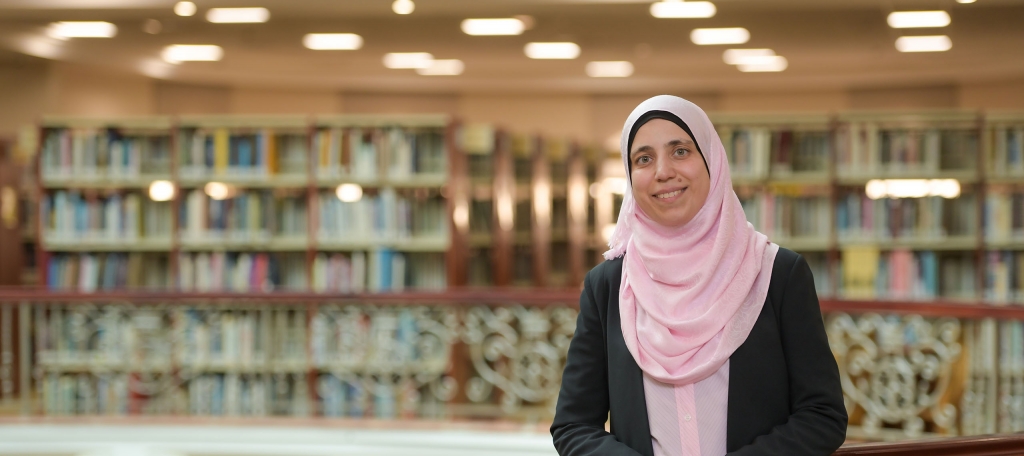
AUS researcher leads an international collaboration studying chemical compositions of distant galaxies
A collaborative study led by a researcher at American University of Sharjah (AUS) has recently published the detailed chemical composition of three star clusters in the Large Magellanic Cloud, a smaller companion galaxy of the Milky Way that is 160,000 light years away, to contribute to understanding the history of the universe.
“Different chemical elements (such as iron, calcium, carbon and many others) form inside the core of stars through nuclear fusion. The stars created today have a different composition compared to the first generation of stars following the Big Bang. They consist of many more elements and have higher chemical abundance. Tracing the chemical enrichment history of different galaxies is one of the fundamental goals of the field of astrophysics,” said Dr. Randa Asa’d, Associate Professor in Physics at AUS and lead researcher.
She added: “We used integrated-light spectroscopic observations in our research, which we obtained by fitting the Magellanic Echelle Spectrograph on the Magellanic Baade Telescope at Las Campanas Observatory in Chile. We were able to determine the chemical abundance of the three star-clusters in the Large Magellanic Cloud. The abundance we derived from observations are in agreement with the theoretical values predicted by mathematical models.”
However, obtaining these outstanding results was no easy feat.
“This research is very exciting, but really challenging. In order to study the chemical abundance of star clusters in distant galaxies, we needed to observe high-resolution integrated spectra of star clusters using some of the largest telescopes in the world. Using these telescopes is very competitive because of their limited number and the many astronomers around the world who need to use them. Another challenge we faced was the need for a powerful computing facility to measure the chemical abundance from the spectra we were studying. To give you an idea about the intensity of the required computing time, the code used to obtain the abundance of one element in one star cluster took several months to produce the results. Such computational abilities are surely not possible using a regular computer,” said Dr. Asa’d.
She added: “I am looking forward to applying the methods used in this study on other galaxies to study their chemical composition and history, which helps us understand the universe as a whole.”
The findings were published in the prestigious peer-reviewed journal Astrophysical Journal (ApJ) and come as part of a series of research projects led by Dr. As’ad in collaboration with research teams from world- renowned research centers and universities including the Harvard-Smithsonian Center for Astrophysics (CfA) and the Space Telescope Science Institute (STScI) among others.
Having earned her PhD in Physics from the University of Cincinnati in 2012, Dr. As’ad joined AUS right after her graduation and has already made a name for herself in the field of stellar-clusters astrophysics. Her research work has been recognized locally and internationally and has been presented at international conferences and published in renowned scientific journals such as Astrophysical Journal and Monthly Notices of the Royal Astronomical Society. She is an elected member of the International Astronomical Union (IAU) - Commission H4 (Stellar Clusters throughout Cosmic Space and Time) and winner of the AUS College of Arts and Sciences Award for Excellence in Research (Mathematics and Sciences) for the Academic Year 2021-2022.
Dr. Asa'd enjoys engaging students in her research and welcomes new passionate students to join her group. She is currently working with six AUS undergraduates on different scopes of research. Two of her students have received undergraduate research grants from the College of Arts and Sciences and plan to travel to the US to work with renowned researchers this summer.
The Department of Physics at the AUS College of Arts and Sciences is at the forefront of scientific endeavor, innovation and entrepreneurship. It is recognized for excellence in teaching and distinguished research. Its faculty are known for their notable research records, and for the collaborations they have fostered with some of the world’s most celebrated physicists, working in the world’s most respected and recognized universities. With the exciting developments in the UAE’s clean energy sector and the launch of an ambitious space program, the Bachelor of Science in Physics offered at AUS prepares students to think rigorously and conduct meaningful and cutting-edge research, preparing them for fulfilling careers in academia, and the public and private sectors.
For more information about the Department of Physics and what it has to offer, please visit www.aus.edu/cas/department-of-physics.


























